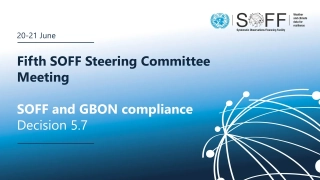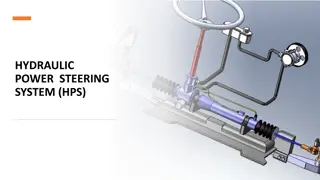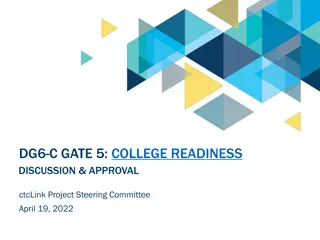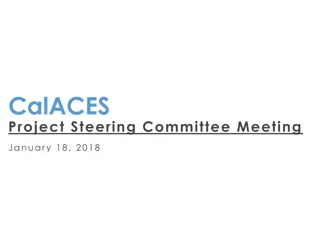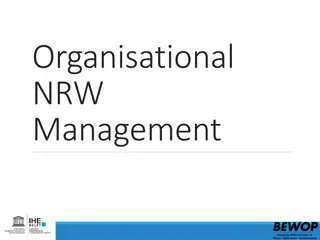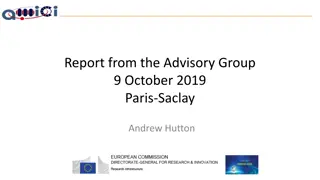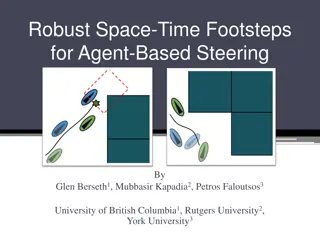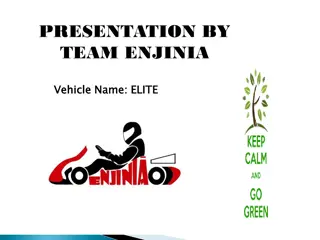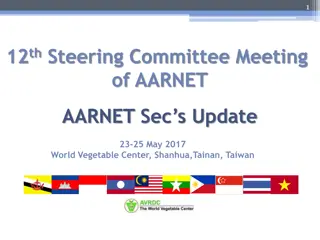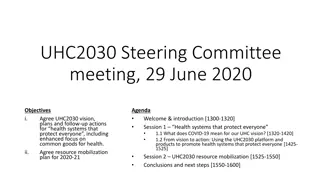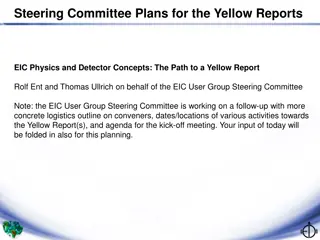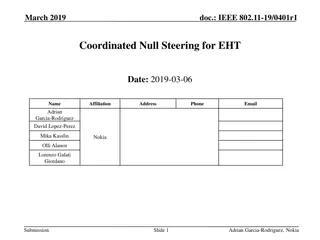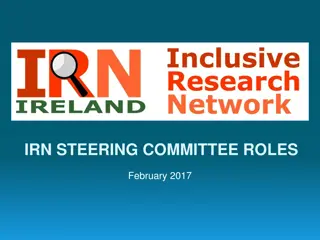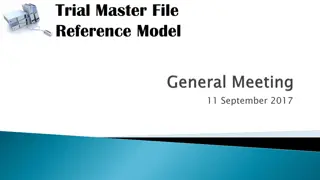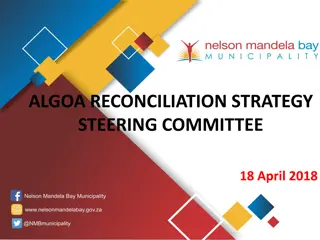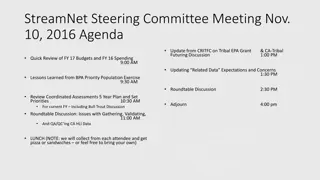
Strategic Planning for Regional Academic Excellence
Explore the key components of a strategic plan focusing on student access, workforce development, community partnerships, technology, financial sustainability, academic excellence, and student support services. Learn about the comprehensive process involved in strategic planning, environmental scanning, stakeholder engagement, goal setting, implementation strategies, and accountability measures to drive academic success in the region.
Download Presentation

Please find below an Image/Link to download the presentation.
The content on the website is provided AS IS for your information and personal use only. It may not be sold, licensed, or shared on other websites without obtaining consent from the author. If you encounter any issues during the download, it is possible that the publisher has removed the file from their server.
You are allowed to download the files provided on this website for personal or commercial use, subject to the condition that they are used lawfully. All files are the property of their respective owners.
The content on the website is provided AS IS for your information and personal use only. It may not be sold, licensed, or shared on other websites without obtaining consent from the author.
E N D
Presentation Transcript
Sandwiches, Snacks and Drinks
FEBRUARY 2025 Strategic Planning 2025-2030
STRATEGIC PLANNING is a comprehensive process that aims to guide the institution's direction and priorities. Specific focus is given to addressing the unique challenges and opportunities of the region while aligning with broader state and national higher education goals.
Key Components of a Strategic Plan include: Student Access Student Access and Success and Success Developing initiatives to increase enrollment, retention, and graduation rates among rural students. This may involve creating outreach programs, providing financial support, and Key Components of a Strategic Plan include: partnering with local school districts to improve college readiness. Workforce Workforce Development Development local job opportunities. This could include expanding vocational and technical programs relevant to the rural South Texas economy. Community Community Partnerships Partnerships enhance educational opportunities and economic development in the region. Technology and Technology and Infrastructure Infrastructure which can be particularly beneficial for rural students Financial Financial Sustainability Sustainability ensure long-term financial stability. Academic Academic Excellence Excellence of dual credit opportunities. Student Support Student Support Services Services needs of rural students Aligning academic programs with regional workforce needs to ensure students are prepared for Fostering collaborations with local businesses, industries, and community organizations to Investing in digital resources and infrastructure to support online and hybrid learning options, Developing plans for efficient resource allocation and exploring alternative funding sources to Enhancing the quality and relevance of academic programs, potentially including the expansion Strengthening academic advising, career counseling, and other support services tailored to the 4
The process typically involves: Environmental scanning to assess current trends and The Process typically involves: challenges in higher education and the local community. Engaging stakeholders, including students, faculty, staff, and community members, for input and feedback. Reviewing and potentially revising the college's mission, vision, and values. Setting specific, measurable goals and objectives aligned with the identified priorities. Developing implementation strategies and action plans for each goal. Establishing metrics and assessment methods to track progress and ensure accountability. Typically includes: Timeline: Key milestones, benchmarks, targets, and thresholds. Metrics: Success monitoring Accountability: Roles and Responsibilities Next Steps and Call to Action: Immediate actions to begin implementation
Steering Committee 2025 Faculty Senate Faculty Senate Student Success & Engagement Student Success & Engagement Faculty/Pleasanton Faculty/Pleasanton Community Member Community Member Faculty Senate Faculty Senate CE & Workforce Development CE & Workforce Development QEP Cougar Care QEP Cougar Care Community Member Community Member NAH Faculty NAH Faculty Marketing Marketing Financial Aid Financial Aid Community Member Community Member Faculty Senate Faculty Senate Foundation Foundation Admissions Admissions Student Member Student Member IT Services & IER IT Services & IER CTE Faculty CTE Faculty TRiO TRiO Programs Programs Student Member Student Member Business Services Business Services TGE Faculty TGE Faculty Board of Trustees Board of Trustees Student Member Student Member Residence Life Residence Life Custodial Custodial Board of Trustees Board of Trustees Athletics Athletics Pleasanton Pleasanton Maintenance Maintenance Presenters will include President, Cabinet, Deans, and Directors. All will the steering committee as ex-officio.
CBC STEERING COMMITTEE PLANNING 2024-2025 MONTH MONTH ACTIVITY ACTIVITY DELIVERABLE(S) DELIVERABLE(S) Steering Committee Team is formed Steering Committee Planning Schedule Steering Committee Team Planning Schedule Current Research and Data Collection Current Research and Data Collection NOVEMBER Mission, Vision, Values Focus Group JANUARY Welcome & Overview FEBRUARY Resources & Financial Outlook Focus Group Interviews with select staff, faculty, community MARCH Instruction & Industry Data Presentations External Location Visits APRIL Student Success & Engagement Survey to students, faculty, staff, & Community MAY MAY Partnerships & Outreach Identify Assessment Metrics DRAFT To Cabinet Access & Engagement Focus Group JUNE Revisions and Final Submission DRAFT To Steering Committee Community Engagement Focus Group Final Strategic Plan to Board of Trustees for Approval JULY AUGUST AUGUST SEPTEMBER Graphic Design Creation Final Metrics Publication 7
STEERING COMMITTEE PLANNING 2024-2025 WORK PLAN WORK PLAN Welcome & Overview Purpose & Call to Action Environmental Scan* Financial Outlook Master Facilities Plan Master Technology Plan Academic Programs Presentation Academic Program Demand Analysis* Academic Plan Online Programming Transfer Education Drive to 55* Cougar Care* Enrollment Management Plan Enrollment Trend Analysis Report* Athletics Residential Housing Foundation & Alumni Community Partnerships Industry Partnerships Marketing Plan DETAILS DETAILS DATE DATE Location Location Welcome & 2020-2025 Accomplishments January CBC - Alice Resources and Financial Outlook February CBC - Pleasanton Instruction and Industry March CBC-Online Student Success & Engagement April CBC-Kingsville Partnerships and Outreach May CBC-Beeville 8
I Wonder Video Presentation I WONDER I WONDER
Financial Outlook Amanda Byrd Chief Financial Officer
RESOURCE DEVELOPMENT 2019-2020 Baseline Year Core Expenses per FTE Enrollment 2020-2021 2021-2022 2022-2023 2023-2024 1620 1560 2688 2720 2256 FTE Enrollment $3,411 $3,574 $2,249 $2,450 $2,765 Instructional Support per FTE $663 $545 $169 $178 $521 Academic Support per FTE $4,541 $4830 $394 $475 $1,402 Student services per FTE $4,058 $3,947 $2,376 $1,928 $2,768 Institutional Support per FTE $2,511 $3,164 $2,373 $2,826 $1,803 Other Expenditures per FTE $15,184 $11,231 $8,213 $8,466 $9,259 Total Operating Expenses per FTE
Master Technology Plan Michael Rowlett Director IT and Systems
Master Facilities Plan JC Director
Activity 1 Activity 1
Activity 2 Activity 2
SOURCES & CITATIONS American Association of Community Colleges. (2024). The future of community colleges: Trends and strategic priorities for 2025-2030. Washington, DC: AACC Press. Gonzalez, M. A., & Rodriguez, L. F. (2023). Serving rural Hispanic students: Strategies for success in South Texas community colleges. Journal of Hispanic Higher Education, 22(3), 215-230. Kuh, G. D., Kinzie, J., Schuh, J. H., & Whitt, E. J. (2022). Student success in college: Creating conditions that matter (3rd ed.). Jossey-Bass. Martinez, E., & Johnson, D. R. (2024). Community college strategic planning: A comprehensive guide for rural institutions. New Directions for Community Colleges, 2024(185), 1-95. Texas Higher Education Coordinating Board. (2025).60x30TX: 2025 progress report and updated goals for 2030. Austin, TX: THECB. U.S. Department of Education. (2024). Rural education in America: Challenges and opportunities. Washington, DC: Government Printing Office.

